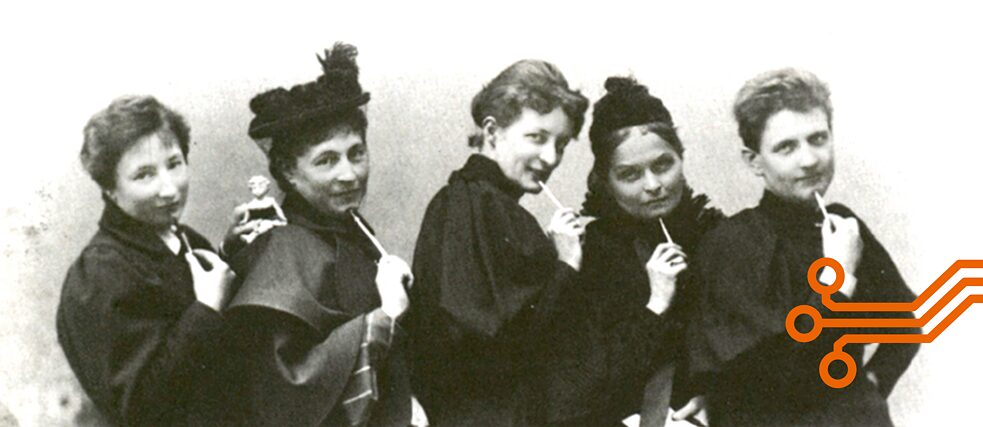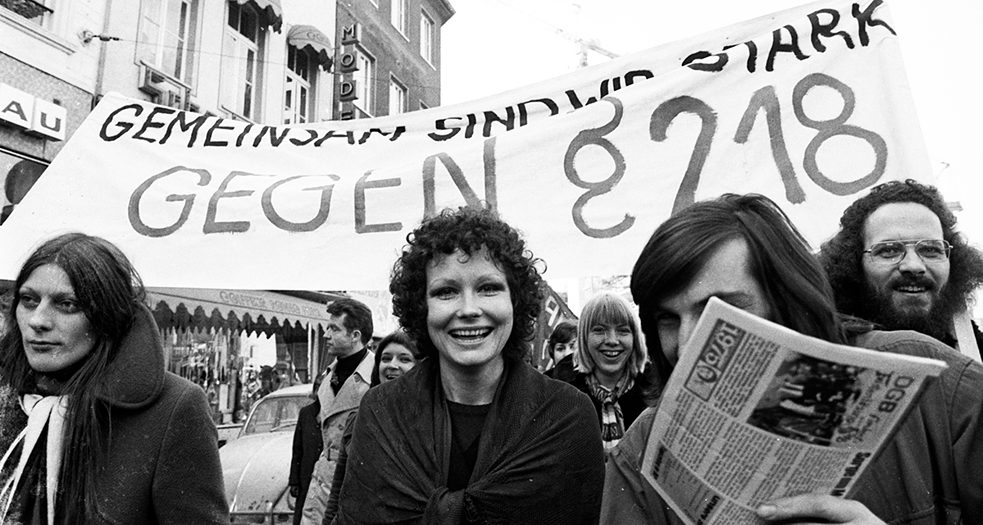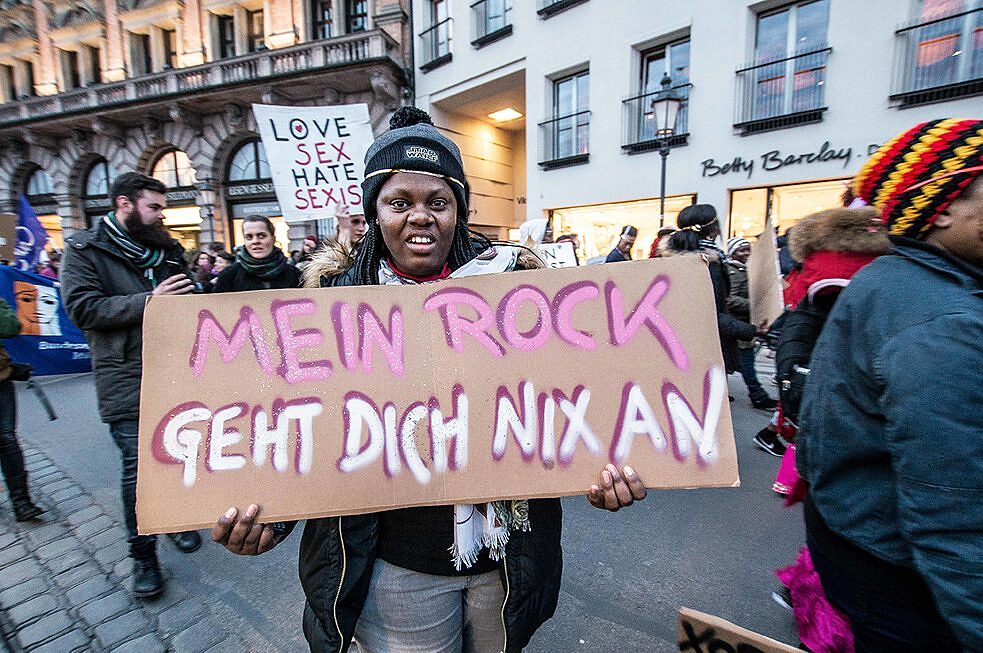Digital Feminism
From the Lex Otto to #aufschrei

If you’ve ever wondered who coined famous phrases like “my belly belongs to me” or founded the first feminist newspapers, you now have the answers at your fingertips. Everything you’ve ever wanted to know about the history of the German women’s movement is available online for the first time in the Digitales Deutsches Frauenarchiv (Digital German Women’s Archive).
By Sonja Eismann
Who first uttered the simple, yet powerful sentence, “human rights know no gender”? Was it Germany’s best-known feminist Alice Schwarzer, or more likely a younger feminist like Margarete Stokowski? As it turns out, it was Hedwig Dohm, a pioneer of the women’s movement who fought for universal women’s suffrage in the 1910s at the beginning of the past century. And who recognized the danger Hitler represented at the start of 1923 before the Beer Hall Putsch in November of the same year, and demanded his immediate expulsion from Germany? It was Anita Augspurg, a pacifist feminist and open lesbian. Was Emma or Courage Germany’s first feminist serial publication? Neither in fact, because the two magazines, launched at roughly the same time in 1977 and 1976, were only larger editions of the Frauenzeitung – Frauen gemeinsam sind stark (Women’s Newspaper – Together Women are Strong), a collective publication first released in October 1973. But in terms of pioneering achievements, the Frauen-Zeitung, published by co-founder of the German women’s movement Louise Otto-Peters, is way out ahead of the pack. Otto-Peters launched the paper back in 1849, only to be forced to give it up a short time later when the Lex Otto was passed in Saxony, a law drafted specifically to prohibit her or any other woman from publishing or editing a newspaper from 1850 onwards.
 Protesters march against the abortion laws on Bonn’s Münster Square in 1975.
| Photo: ©picture alliance/Klaus Rose
Protesters march against the abortion laws on Bonn’s Münster Square in 1975.
| Photo: ©picture alliance/Klaus Rose
Highlighting continuity
All this information is accessible with just a few clicks on the Digital German Women’s Archive website, which went online in September 2018 with the aim of digitising, bundling and visualising data of all kinds about the German women’s movement. As the above examples show, the wealth of material on one of the most important social movements of the last 200 years is extensive, but little more than a blip in the public consciousness. In cooperation with the 40 institutions involved in the Dachverband deutschsprachiger Frauen- und Lesbenarchive, -bibliotheken und -dokumentationsstellen (i.d.a, an organization of German language lesbian/women’s libraries, archives and documentation centres), a red carpet has been rolled out for all those interested in women’s issues and the history of emancipation. Materials gathered from Germany, Austria, Switzerland, Luxembourg and Italy (South Tyrol) are now available on the web, and organised both by topic and by the people involved. The archive entices visitors to spend hours browsing and discovering the countless scanned original documents – photos, newspaper clippings, posters, flyers and entire handbooks – which also create a visual sense of the respective time and place.
 Protests on International Women’s Day, 8 March 2018, in Munich. The sign reads, “My skirt is none of your business.”
| Photo: ©picture alliance/ZUMA Press
The new digital archive impressively highlights the continuities of the feminist movement. Far too often, new generations of feminists strain under the burden of reinventing the wheel because women’s stories are still almost invisible afterthoughts. But as the expanse of data on the website and the accompanying blog demonstrate, many of the struggles and hostilities women have faced are as old as the movement itself. Newspaper clippings from the 1920s show that even then, when women seemed to have almost no rights from today’s point of view, many men protested that feminism went too far. The Bund für Männerrechte (League for Men’s Rights) was founded in Vienna at that time to lament the role of the man in marriage, which they argued had been reduced to an object of exploitation. The parallels to today’s masculinists, whose issues include fighting apparent discrimination against divorced men, are striking. Feminist journalists have also faced similar issues throughout the centuries: from writer Louise Otto-Peters and the founders of 1970s magazines such as Frauenzeitung and Courage to the feminist network and print writers of today, all have faced public hostility and struggled with financial uncertainty. The Digital German Women’s Archive reveals these parallels. The more we know about the women behind the women’s movement in its earliest days, the more we can learn from them. Until then though, we will continue to click curiously from one link to the next and look forward to even more enthralling visuals. It would be amazing to see the original and still inspiring demonstration posters for the right to vote for instance – and to include even more diversity of sexual, ethnic, religious and gender identities.
Protests on International Women’s Day, 8 March 2018, in Munich. The sign reads, “My skirt is none of your business.”
| Photo: ©picture alliance/ZUMA Press
The new digital archive impressively highlights the continuities of the feminist movement. Far too often, new generations of feminists strain under the burden of reinventing the wheel because women’s stories are still almost invisible afterthoughts. But as the expanse of data on the website and the accompanying blog demonstrate, many of the struggles and hostilities women have faced are as old as the movement itself. Newspaper clippings from the 1920s show that even then, when women seemed to have almost no rights from today’s point of view, many men protested that feminism went too far. The Bund für Männerrechte (League for Men’s Rights) was founded in Vienna at that time to lament the role of the man in marriage, which they argued had been reduced to an object of exploitation. The parallels to today’s masculinists, whose issues include fighting apparent discrimination against divorced men, are striking. Feminist journalists have also faced similar issues throughout the centuries: from writer Louise Otto-Peters and the founders of 1970s magazines such as Frauenzeitung and Courage to the feminist network and print writers of today, all have faced public hostility and struggled with financial uncertainty. The Digital German Women’s Archive reveals these parallels. The more we know about the women behind the women’s movement in its earliest days, the more we can learn from them. Until then though, we will continue to click curiously from one link to the next and look forward to even more enthralling visuals. It would be amazing to see the original and still inspiring demonstration posters for the right to vote for instance – and to include even more diversity of sexual, ethnic, religious and gender identities.